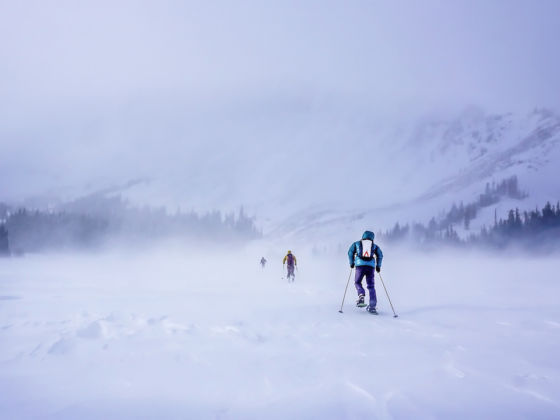I’VE BEEN in Colorado for just six years, so I know I’ve only brushed its surface. At the end of every Friday, I make my way to the mountains to hike, camp, bike, and climb. There’s a reason Colorado is one of the fittest states in the country, and outdoor recreation doesn’t end when the snow falls — it simply changes. I’ve had my fair share of winters here, so I know that when the puffies and beanies come out, what gets me out of bed at 4 a.m. is about to change.
For that, I’m paying tribute to the glory that is a Colorado winter. Because we don’t only resort ski here — we snowshoe to icy alpine lakes, track avalanche danger on a daily basis, drink whiskey, split board through feet of snow on mountain passes, burrow into -20° sleeping bags to keep our toes from falling off, drink more whiskey, and trust our lives to screws driven into frozen waterfalls.
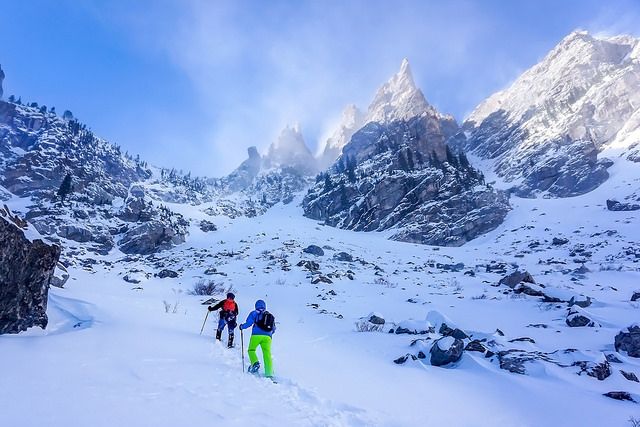
At 415 square miles, Rocky Mountain National Park is populated with trails that weave through rugged mountains and meandering rivers. After around 2 miles of snowshoeing on our trip there, we were greeted by the view of Emerald Lake surrounded by its’ snow-capped peaks. Not wanting to head back to reality quite yet, my hiking partners Nate and Justin made their way through some fresh powder to get a better look at the jagged peaks we were surrounded by. Although some roads are closed during winter, Rocky Mountain National Park is year-round and allows for a variety of winter activities including snowshoeing, backcountry skiing, sledding, and wildlife watching.
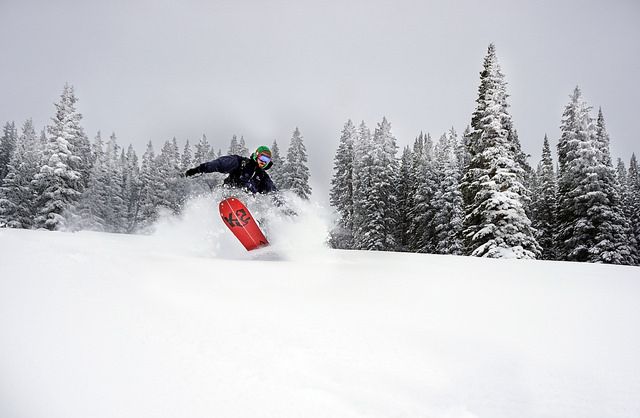
Backcountry skiing and split boarding are performed in the backcountry -- unpatrolled, unmaintained territory. While the call of fresh powder tempts many, it’s important to recognize that with the unscathed beauty of the backcountry also comes danger. Without avalanche mitigation, it’s important to take courses, practice with partners, and contact the Colorado Avalanche Information Center before venturing out to create those fresh tracks in the Colorado wilderness.

One of the most traveled trails in Colorado, Hanging Lake is home to crystal clear turquoise waters which appear to be hanging onto the edge of Glenwood Canyon’s cliffs. In the winter, the waterfalls take on a new form as they become formations of ice intermixed with trickles of water. Although some may be discouraged by the feet of snow which often occupies the area during the winter, additional winter gear may only need to consist of extra layers and snowshoes or microspikes. Snow gives Colorado new life, and with proper preparation, provides the opportunity for new experiences in old places.
Intermission
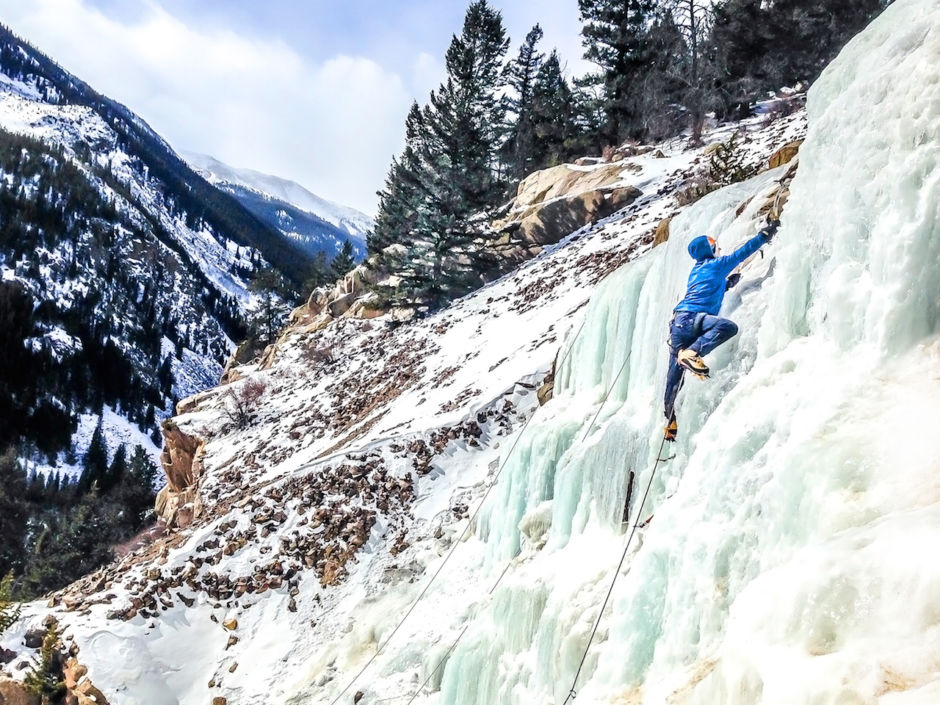
After making our way up the rocky gully to Silverplume Falls, we unloaded our packs and geared up with harnesses, crampons, and ice axes. Jack Ziegler sent his second lead of the day and anchored our top rope so we could all get a few laps in. Although many are deterred by the cold, the height, or the unstable nature of ice, ice climbing provides many climbers and outdoor enthusiasts the chance for outdoor winter recreation in the mountains with friends and breathtaking views besides skiing or snowshoeing.
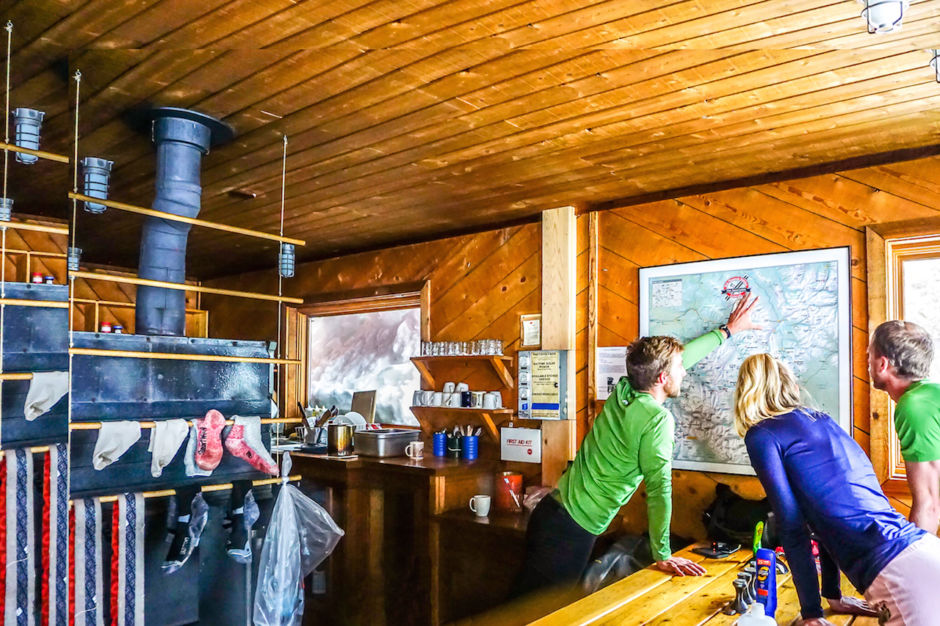
After a 6-mile hike through a whiteout snowstorm, we arrived around 10 PM, cold and wet. We settled into McNamara Hut for the night with warm drinks, a fire blazing, and stories of feats and failures. We woke up to a day of backcountry adventure, skiing and snowshoeing, good friends, and too much whiskey. Backcountry huts allow for camping in the backcountry -- minus the camping. There are many huts throughout Colorado (for this trip, we chose the 10th Mountain Division System) which can oftentimes be connected by daily travel to create multi-day trips. Some huts may have sleeping mattresses, wood burning stoves, and outhouses, while others are simply platforms with walls and a ceiling to keep the snow out.
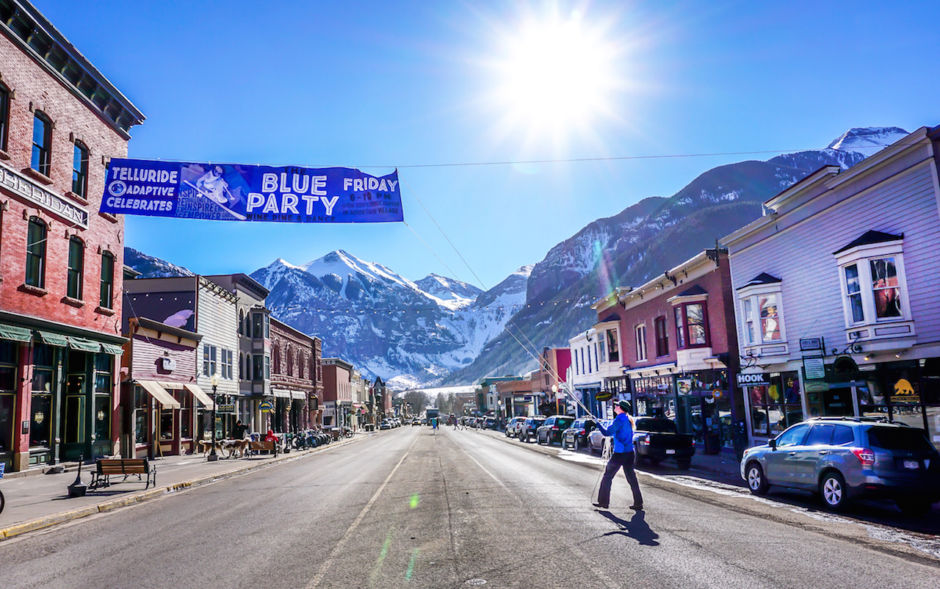
Colorado calls for some spectacular winter adventures, but that doesn’t just mean outdoor recreation. From quaint mountain towns to the front range cities, Colorado hosts a plethora of individuals dedicated to delicious craft beer, unique food, and music anyone can stomp their foot to. Artists come to the many festivals held across the state year-round. And just because it’s winter doesn’t necessarily mean you’ll be cold -- boosting warm drinks and 300 days of sunshine mean there are plenty of ways to keep toasty at Colorado's winter festivals.
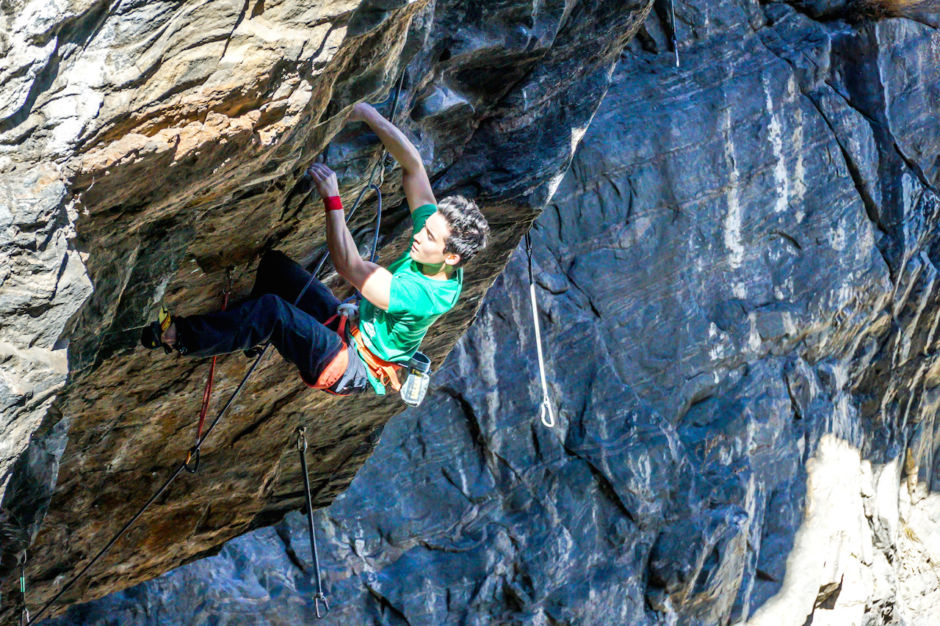
For climbers, there is no season. With the amount of sun Colorado receives, there’s always a rock warm enough to scale. Whether you’re a pro or a beginner, a trad climber or a boulderer, winter rock climbing is out there. From Shelf Road, to Rifle, to Rocky Mountain National Park, you just need to bring along your guide book, a puffy, and your crag pup and you’re good to go. The weekend after sport and speed climbing nationals, I was fortunate enough to climb in Clear Creek Canyon with a few of the competitors. In this image, Brian Huang makes a quick ascent of a dihedral route called Sonic Youth, a 5.13a.
Intermission
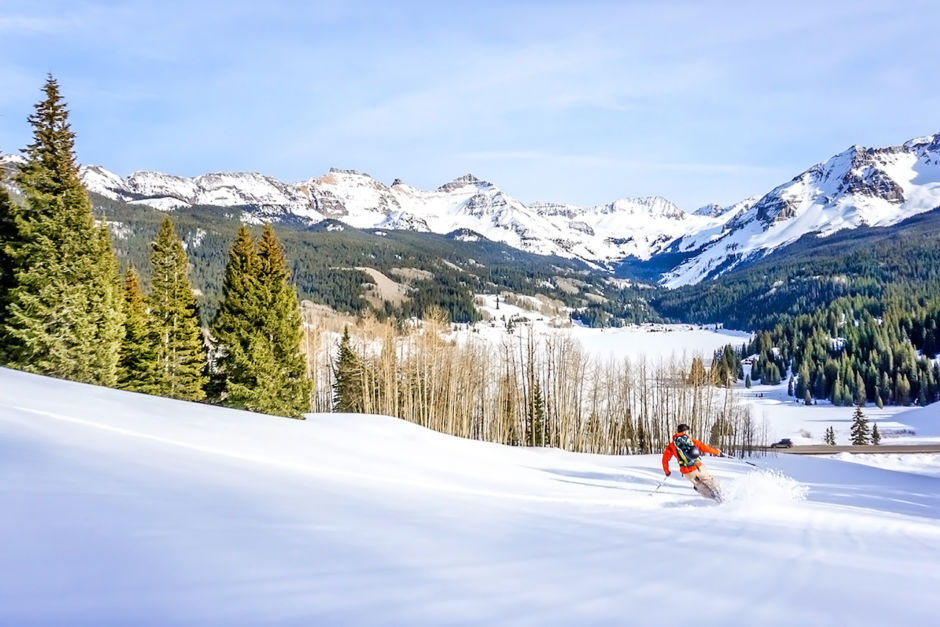
There is beautiful and accessible backcountry territory all over Colorado. During a recent trip to San Juan National Forest, we found a forest covered hill with a large cavity and breathtaking views near Ophir, Colorado. We decided to get out of the car to stretch our legs, and go for a short tour right off the road while we still had sunlight. Just breaking through the trees, we had some incredible light and fresh powder to play in. What is so fantastic about backcountry skiing, splitboarding, and snowshoeing is that you don’t need a trail. You just need to be well learned in avalanche danger, and it is highly recommended to go with a partner and always let someone know where you are going and for how long.
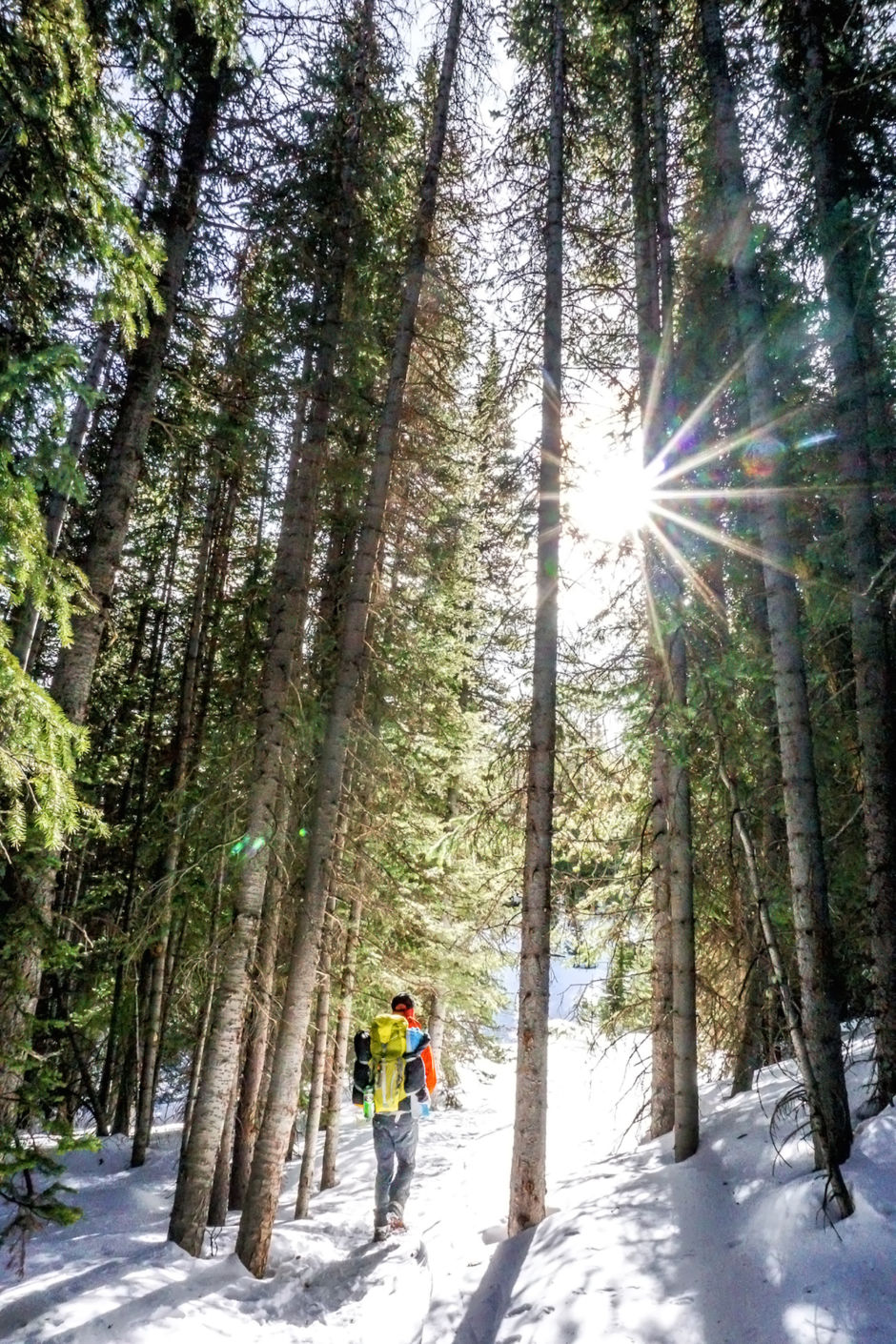
There is beautiful hiking all over Colorado, even in the winter. You don’t need snowshoes or skis to access beautiful snowy terrain -- you just need to check conditions to make sure you are adequately equipped. Some trails are packed down enough to access alone by boot or with microspikes, and they allow for the chance to explore Colorado without having a loaded gear closet. During a backpacking trip to Mohawk Lake near Breckinridge, we were able to hike the majority of the trail with nothing but our winter boots. As it got later, the snow got deeper and the wind whipped harder, and we decided to dig our snow pit before we reached the lake, but we were able to access it all simply by the boots on our feet.
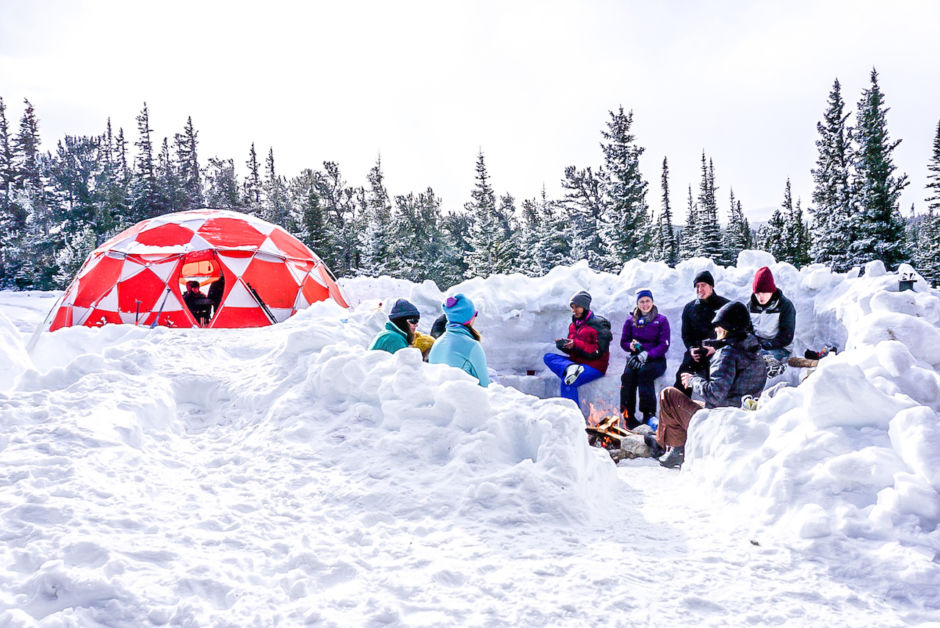
Some think of the winter as too harsh for camping, but I like to think of it as an incredible blend of bliss and insanity. How in tune with nature you feel, to fall asleep as the snow dances around you and wake up to fresh powder covering the surrounding peaks and a warm meal and cider in your tent. It's a struggle, but it's also freeing to trudge through feet of snow, dig a pit to block out the biting wind and experience frozen boots in the morning. A group of us had the opportunity to test out some new gear at the Brainard Lake Recreation Area. We learned how to properly build snow caves, keep warm in negative temperatures, and we built better friendships by the fireside over spiked cocoa and hot dogs. Brainard Lake is home to beautiful trails in both winter and summer, gorgeous forests interlaced with wildlife from fox to moose, and has a free hut with a wood burning fireplace for those who are interested in trying winter camping but are wary of the cold.
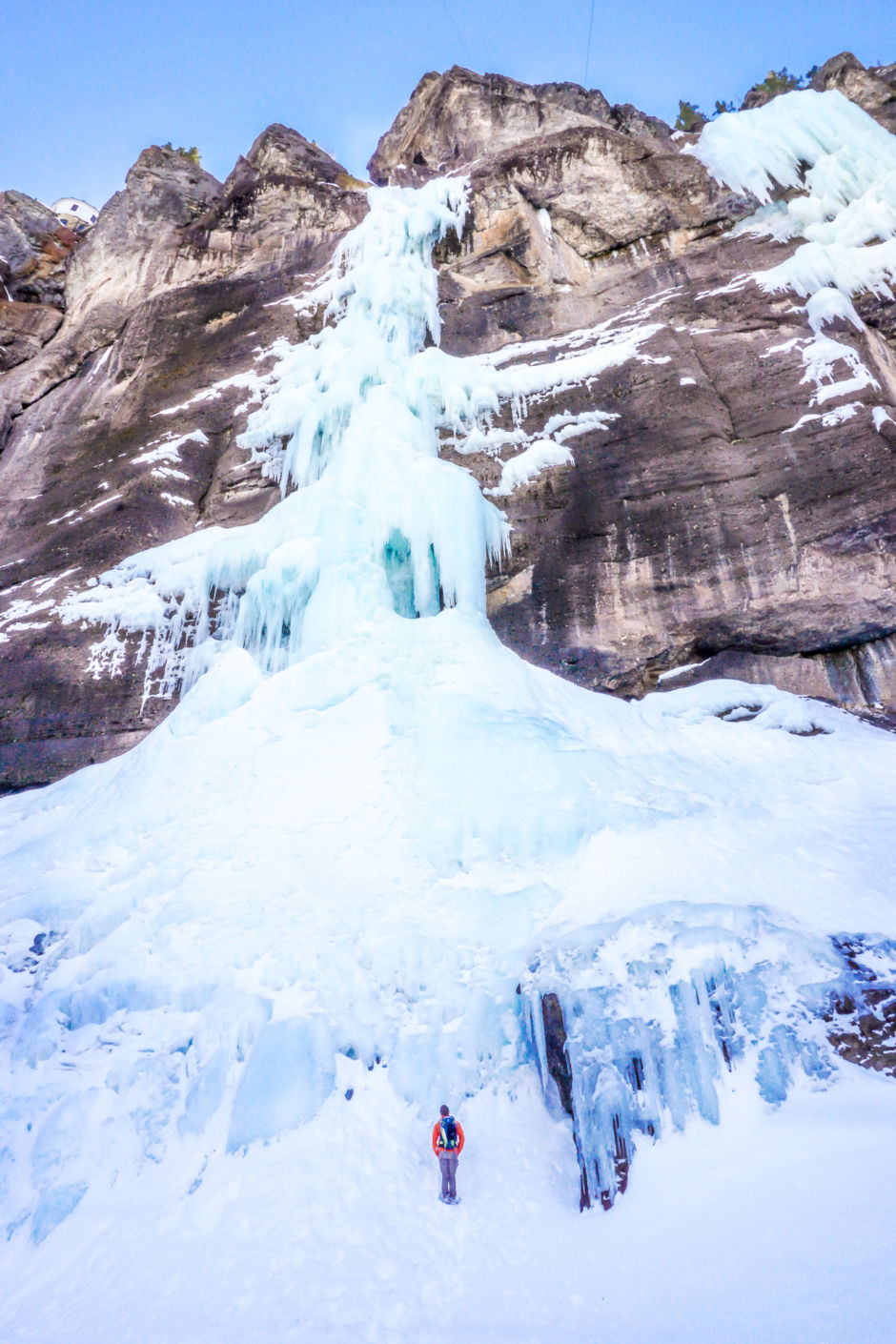
I love the ability nature has to make you feel tiny and insignificant. With mountain ranges intertwined with roaring rivers and lively forests, it’s not too hard to find what might inspire you in Colorado, especially during the winter. While in Telluride, we hiked 2 miles (without snowshoes or skis) to the icy 365-foot walls of Bridal Veil Falls. When the water is flowing, the falls are home to a hydro-electric alternating power plant which supplies Telluride with about 25 percent of their electricity needs. During the winter, the falls form into daggers of ice that tower above you and make you realize that no matter what may be going on in your life, nature might just be the tonic for you.
